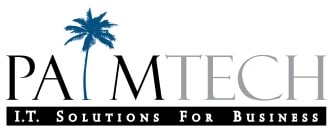Although cyberattacks on businesses have become increasingly prevalent in recent years, many small-business owners assume that their business is immune to such attacks. This belief often stems from the notion that cybercriminals target larger companies.
PalmTech Computer Solutions
Submit a Support RequestContact Us
1025 N. Florida Mango Rd.
Suite 5 West Palm Beach, FL 33409
United States
5 Seemingly Innocent Download Habits Your Employees Must STOP Now To Avoid A Ransomware Attack

Once upon a time, you could install antivirus software and go about your merry way online and in your inbox, opening, clicking, and downloading files without a care.
Today, antivirus alone cannot and will not protect you, especially if you INVITE the hack by downloading a file that is infected with a piece of code designed to circumvent your security protocols.
The Biggest Risk Is Not The One You Don’t Take, But The One You Don’t See

“The biggest risk is the one you don’t take” is a mantra you’ll hear motivational speakers deliver in their presentations to make the argument that you should throw all caution to the wind and go for it (whatever “it” is).
And while that may be a good piece of advice to get someone to take action on an idea (and get the speaker applause at the end of their presentation), truly smart, experienced entrepreneurs and business executives NEVER throw “caution to the wind” and take wild risks.
Help Your Business Thrive With Co-Managed IT Services

Over the past few years, awareness about IT services has significantly increased. Businesses of varying sizes recognize the need for and importance of utilizing IT services to protect sensitive data, keep day-to-day operations running smoothly, increase productivity throughout various departments, and stay up-to-date with the most recent technology trends.
Urgent Security Alert For PalmTech Clients: Microsoft 365 Apps Vulnerability
We want to inform you of a critical security issue affecting Microsoft Outlook/365 applications.
This vulnerability, known as CVE-2023-23397, is being exploited by cybercriminals and requires immediate attention. Simply put, attackers can gain unauthorized access to your systems and steal sensitive information just by sending a specially crafted email.
Protect Your Business By Becoming Aware Of The Most Common Types Of Cyber Attacks
The Importance of Identity and Access Management in Protecting Your Business
Protect Yourself From Holiday Hackers With These Tips
Urgent Security Notice: Check Washing
Last week, our office park was hit by an organized group of mail thieves. They broke into several boxes including the outgoing mail drop. Why would they do this? Check washing. It’s not a new scam but according to Postal Inspectors, it’s on the rise.





